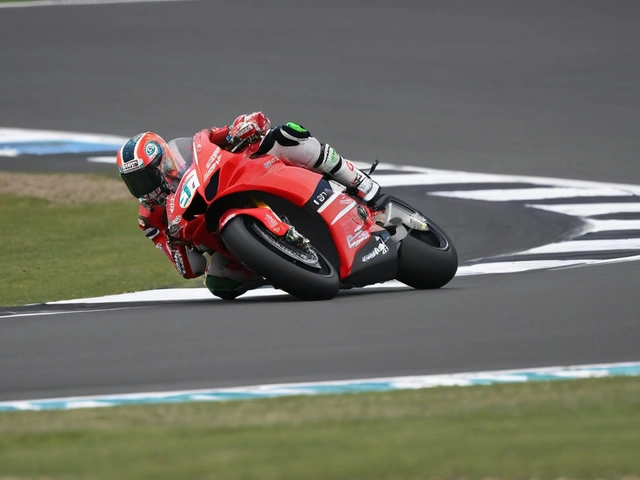The Mysterious Condition: Takotsubo Cardiomyopathy
Takotsubo cardiomyopathy, often referred to as 'broken heart' syndrome, first came to public attention in 1991 when Japanese researchers identified it during studies on patients who experienced acute stress symptoms. It derived its name from ‘takotsubo’, an octopus trap used by Japanese fishermen, which the heart’s appearance mimics during this condition. Unlike traditional heart attacks that occur due to blockages in the coronary arteries, Takotsubo instead results from an overflow of stress hormones like adrenaline, leading to temporary dysfunction of the heart’s left ventricle. Although it is considered rare, it predominantly affects post-menopausal women and occurs after surprising, intense physical or emotional stress.
Rigathi Gachagua's Diagnosis: A Case of Takotsubo
The recent news about former Deputy President Rigathi Gachagua being diagnosed with this syndrome has stirred interest and concern. Gachagua disclosed that he experienced abrupt and acute chest pain that led him to seek urgent medical care. His symptoms mirrored those of a heart attack but were confirmed as Takotsubo cardiomyopathy by healthcare professionals. While the exact emotional stressors behind this development remain undisclosed, it highlights how sudden and intense emotional turmoil can physically impact the heart, transforming intangible emotions into tangible health issues.
Symptoms and Diagnosis: Mimicking a Heart Attack
Patients suffering from Takotsubo cardiomyopathy experience symptoms akin to a myocardial infarction, commonly known as a heart attack. These include chest pain, shortness of breath, and fainting. Diagnosis typically involves coronary angiography, which would show normal arteries in Takotsubo cases, unlike the blockages seen in typical heart attacks. Other diagnostic tools include echocardiography and cardiac MRI, which aid in visualizing heart's movements and identifying the characteristic left ventricle's ballooning.
Exploring the Causes: Stress as a Central Factor
The pivotal component in developing Takotsubo cardiomyopathy is often an overstimulation of the sympathetic nervous system, induced by emotional, physical, or environmental stress. Situations such as the death of a loved one, sudden financial loss, or intense fear can cause stress hormones to surge. Although rare, this overflowing adrenaline response can adversely impact heart function, leading to the 'stunning' effect of the left ventricle.
Broader Implications: The Significance of Stress Management
Gachagua's high-profile case brings forth essential discussions on managing stress and its importance for maintaining overall health, especially heart health. While stress is an inevitable aspect of life, it becomes crucial to develop effective coping strategies and lifestyle changes that mitigate excessive stress. Engaging in regular physical activities, practicing meditation, establishing support systems, and seeking professional help, if needed, can be practical measures to manage stress effectively and diminish its potential to lead to severe health issues like Takotsubo cardiomyopathy.
The Road Ahead: Monitoring and Recovery
For individuals diagnosed with Takotsubo cardiomyopathy, prognosis tends to be favorable as the heart usually recovers its normal function after a few weeks to months of appropriate care and treatment. Although it's generally not fatal, survivors are advised to undergo regular follow-ups and medications that support heart health. Due to its unpredictable nature, consistent monitoring and understanding personal stress triggers remain paramount. Unfortunately, detailed updates on Gachagua's recovery stages are yet to be disclosed, but it's expected that he is under meticulous medical observation and care.
The case of Rigathi Gachagua serves as a poignant reminder of the intricate connections between emotional health and physical well-being, reinforcing the importance of addressing stress and emotional challenges as part of holistic healthcare approaches. As research continues into Takotsubo cardiomyopathy, understanding the impact of stress on heart health remains vital for prevention and improved treatment options worldwide.










6 Comments
Sending hopeful vibes, he'll bounce back soon! 😊
Takotsubo cardiomyopathy, colloquially dubbed the 'broken‑heart syndrome,' exemplifies a fascinating neuro‑cardiac axis wherein catecholamine surge precipitates reversible left‑ventricular systolic dysfunction. The pathophysiological paradigm hinges on excessive β‑adrenergic stimulation leading to intracellular calcium overload, myocardial stunning, and transient apical ballooning observable on echocardiography. Diagnostic algorithms prioritize coronary angiography to exclude obstructive coronary artery disease, while left ventriculography and cardiac magnetic resonance imaging delineate the characteristic wall‑motion abnormalities without late gadolinium enhancement, thereby differentiating it from infarction‑related necrosis. Epidemiologically, the syndrome disproportionately afflicts post‑menopausal females, insinuating a hormonal modulation component, yet emerging case series underscore its occurrence in younger males experiencing acute emotional or physical stressors.
From a therapeutic standpoint, management is largely supportive: beta‑blockers attenuate sympathetic overdrive, ACE inhibitors facilitate reverse remodeling, and anticoagulation is considered when apical thrombus risk is elevated. Prognostically, the majority of patients achieve complete functional recovery within weeks to months, though recurrence rates of approximately 5‑10% warrant longitudinal surveillance.
In the context of Rigathi Gachagua’s presentation, one might conjecture that the abrupt political pressures and media scrutiny constitute an acute psychosocial stressor potent enough to trigger this catecholamine‑mediated cascade. It underscores the imperative for clinicians to maintain a high index of suspicion for stress‑induced cardiomyopathy in atypical chest pain presentations, especially when conventional risk factors are absent. Moreover, this case amplifies public health discourse on the cardiotoxic potential of chronic stress, advocating for integrative interventions encompassing mindfulness‑based stress reduction, regular aerobic exercise, and psychosocial support networks to mitigate sympathetic hyperactivity. Ultimately, interdisciplinary collaboration between cardiology, psychiatry, and primary care is essential to formulate comprehensive care pathways that address both the somatic and emotional dimensions of Takotsubo syndrome.
While empathy is commendable, framing this medical condition as a moral lesson about personal resilience borders on victim‑blaming. The narrative implies that individuals must simply "manage stress" without acknowledging systemic pressures that can overwhelm anyone, regardless of character. Such simplifications ignore the complex neuro‑endocrine mechanisms at play and risk trivializing genuine health crises.
I hear your concerns, and it’s vital to recognize that systemic stressors do contribute significantly to health outcomes. Nonetheless, raising awareness about individual coping strategies can empower those affected to seek early intervention and support, complementing broader societal efforts.
Hey folks, just a friendly reminder: if you or someone you know experiences sudden chest discomfort, don’t dismiss it as “just stress.” Early medical evaluation can differentiate a heart attack from Takotsubo and guide appropriate care. Stay chill and stay safe!
Absolutely, Rob! It’s also worth noting that follow‑up echocardiograms are crucial to confirm recovery of ventricular function. Consistent monitoring, combined with lifestyle modifications, can markedly reduce the risk of recurrence!!!